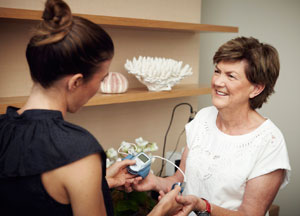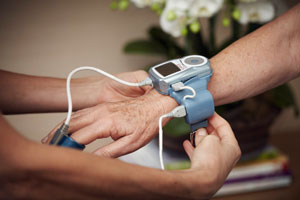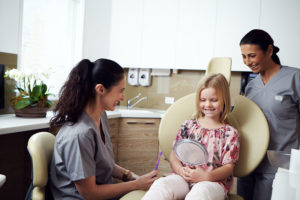Sleep Apnoea
Take Our Online Sleep Evaluation
Feel sleepy reading this? It could be that you’re not sleeping properly.
 If you often wake up after what seems like a full night’s sleep and feel exhausted and unable to focus, and end up spending the entire day trying to stay awake, you could be one of the estimated 5% of Australian adults suffering from sleep apnoea.
If you often wake up after what seems like a full night’s sleep and feel exhausted and unable to focus, and end up spending the entire day trying to stay awake, you could be one of the estimated 5% of Australian adults suffering from sleep apnoea.
Quite possibly, broken sleep, restlessness, and daily tiredness can indicate that your oxygen supply is being intermittently blocked as you sleep, causing an involuntary waking to clear the respiratory tract and allow ease of breath again. For some, this restless waking can occur up to 400 times per night, making it impossible to actually enjoy a restful sleep. Not getting enough sleep on a regular basis can have a significant impact on daily life, increasing the risks of general health and emotional well-being for them as well as their partner. The Paddington Dental Surgery has many options to help treat snoring, sleep apnoea, and sleep loss.
- What Is Sleep Apnoea?
- Do I Have Sleep Apnoea?
- Sleep Apnoea Diagnosis
- Sleep Apnoea Symptoms
- Sleep Apnoea Side Effects
- Sleep Apnoea Risk Factors
- Types of Sleep Apnoea
- Sleep Apnoea Treatments
- Benefits of a Good Night’s Sleep
- Can Sleep Apnoea be Cured?
- Sleep Apnoea in Children
- Sleep Apnoea FAQs
What Is Sleep Apnoea?
Soft tissues in the throat, tongue, and nasal passages become very relaxed whilst you sleep. In some cases, they can become so relaxed that they narrow your airways, causing abnormal breathing patterns. Sleep apnoea, or obstructive sleep apnoea (OSA), causes the throat to partially or fully block during sleep. As a result, the chest muscles fight to draw air into the lungs often leading to a forceful jerk or loud gasp when breathing resumes. These episodes may happen frequently throughout the night and can cause snoring, restlessness, and choking. They may also disturb sleep for the sufferer and anyone who shares the same space. Whilst you may be aware that you or your loved one’s breathing is disrupted during the night, you may not realise that it could indicate OSA, a treatable medical condition.
Do I Have Sleep Apnoea?
Take this two-minute quiz to find out more.
How Is Sleep Apnoea Diagnosed?
In order to obtain a formal sleep apnoea diagnosis, patients must undergo a sleep study (also referred to as a “sleep apnoea test”). During this study, which is typically performed at a professional sleep centre, patients sleep whilst attached to specially-designed equipment. Over the course of the test, the machinery tracks the patient’s oxygen levels, brain activity, and breathing patterns. Alternatively, you may be given a portable device with which you can self-administer the study at home. The results should help your doctor determine whether you have sleep apnoea and the type of disorder indicated by your symptoms.
What Are Common Symptoms of Sleep Apnoea?
TThe most common signs of sleep apnoea include snoring, insomnia, excessive daytime sleepiness, sleep deprivation, and loud breathing. Associated symptoms can include dry mouth, morning headaches, and irritability. These symptoms can indicate OSA (Obstructive Sleep Apnoea) and if left untreated can lead to conditions such as frequent headaches, chronic fatigue, mood swings, and weight gain.
What Are the Side Effects and Risks of Sleep Apnoea?
In some cases sleep apnoea can also lead to long-term and life-threatening risks to total health and well-being:
- Impaired concentration
- Decreased sex drive
- Obesity
- High blood pressure
- Depression
- Impaired eyesight
- Memory loss
- Stroke
- Sudden cardiac death
Our dentists can talk with you about your symptoms and develop a total health dentistry treatment plan designed to reduce the risks that sleep apnoea can cause.
Who Is At Risk of Sleep Apnoea?
OSA can affect men, women and children, regardless of age, weight, height or ethnicity. However, there are certain factors that can increase an individual’s potential for having OSA. These can include:
- Nasal obstruction (due to allergies, a deviated septum, or other sinus issues)
- Large tongue and/or tonsils
- Family history of snoring or sleep apnoea
- Large neck
- Gastroesophageal reflux (GERD)
- Smoking
- Drinking
Additionally, people who are overweight are often at risk of developing OSA, since excess fat can become an obstruction to the airway when sleeping. Men also tend to be at higher risk than women, although cases of sleep apnoea are typically more common in all individuals over the age of 40.
What Are the Types of Sleep Apnoea?
Three main types of sleep apnoea are commonly discussed when diagnosing this disorder:
Obstructive Sleep Apnoea (OSA)
The most common type of sleep apnoea is OSA, or “obstructive sleep apnoea.” OSA is caused by a blockage, i.e. obstruction, of the airway by oral and bodily tissues that can make breathing much more difficult. Treatment for OSA typically aims to clear the blockage and/or keep the airway open.*
Central Sleep Apnoea (CSA)
CSA, short for “central sleep apnoea,” is less common than OSA – but often more dangerous. It is caused by a failure of the brain to send proper signals to the muscles that control the breathing systems, telling them to function correctly. A CPAP or adaptive servo-ventilation (ASV) machine may be needed to regulate the patient’s breathing.*
Complex Sleep Apnoea Syndrome
Essentially a combination of OSA and CSA, complex sleep apnoea syndrome often develops when a patient is already undergoing treatment for OSA (in fact, the subtype is frequently referred to as “treatment-emergent central sleep apnoea”). In such cases, the use of a CPAP machine may ease symptoms of OSA but prompt the development of CSA.* Treatment for complex sleep apnea syndrome can be challenging and may involve adjustments to CPAP settings, trying different types of positive airway pressure therapy, or using devices that provide adaptive servo-ventilation (ASV) to address both obstructive and central events.
What Are the Treatment Options for Sleep Apnoea and Snoring?
Oral Appliances
 The most convenient and best-tolerated treatment options available to a patient who snores or has been diagnosed with sleep apnoea is a custom-made oral appliance. We can create a comfortable, personalised oral appliance to alleviate all the symptoms of mild, moderate, and severe snoring and sleep apnoea. The appliance is worn during sleep to shift the jaw slightly forward, keeping the airways open. Unlike a continuous positive airway pressure (CPAP) machine, oral appliances are not very bulky or cumbersome, and do not have tubes, wires, or machinery pushing air into the airways. To qualify for treatment with an oral appliance, patients must first complete a sleep study and receive a definitive diagnosis.
The most convenient and best-tolerated treatment options available to a patient who snores or has been diagnosed with sleep apnoea is a custom-made oral appliance. We can create a comfortable, personalised oral appliance to alleviate all the symptoms of mild, moderate, and severe snoring and sleep apnoea. The appliance is worn during sleep to shift the jaw slightly forward, keeping the airways open. Unlike a continuous positive airway pressure (CPAP) machine, oral appliances are not very bulky or cumbersome, and do not have tubes, wires, or machinery pushing air into the airways. To qualify for treatment with an oral appliance, patients must first complete a sleep study and receive a definitive diagnosis.
Surgical Options
Although it is preferred to avoid surgical intervention if possible, some patients may benefit from nose and throat surgery. The Paddington Dental Surgery works closely with some of Sydney’s leading ear, nose, throat, and respiratory surgeons.
Talk to one of our knowledgeable team members about sleep apnoea treatment options to help improve the quality of your sleep today.
What Are the Benefits of a Good Night’s Sleep?
If snoring or sleep apnoea is causing you to lose sleep, we can help. With a variety of treatment options available, The Paddington Dental Surgery can assist you in finding the solution that’s best for you, so you and your partner can get the rest you deserve. Some of the incredible benefits our patients have experienced after treatment include:
- More energy
- Weight loss
- Less stress
- Lowered risk of accidents
- Less anxiety and depression
- More successful at work
- Better relationships
- Enhanced libido
- Improved blood pressure
- Sharpened attention
Can Sleep Apnoea Be Cured?
There is unfortunately no official cure for sleep apnoea as of yet; however, high quality, custom-crafted oral appliances can dramatically reduce the symptoms of this disorder. In addition, the use of a CPAP machine can facilitate normal breathing in patients with more severe sleep apnoea, and nose and throat surgery can be effective in the most serious cases. Ultimately, the most powerful form of defence against sleep apnoea is to have a team of experienced medical professionals monitor your care.
Sleep Apnoea in Children
 Paediatric sleep apnoea is similar to the disorder in adults, with a few noticeable differences. Rather than daytime sleepiness, children are more likely to express behavioural problems. Paediatric sleep apnoea is also often due to enlarged adenoids and tonsils rather than being overweight. If you notice your child experiencing any of the following whilst sleeping, contact your paediatrician to see if sleep apnoea may be an issue:
Paediatric sleep apnoea is similar to the disorder in adults, with a few noticeable differences. Rather than daytime sleepiness, children are more likely to express behavioural problems. Paediatric sleep apnoea is also often due to enlarged adenoids and tonsils rather than being overweight. If you notice your child experiencing any of the following whilst sleeping, contact your paediatrician to see if sleep apnoea may be an issue:
- Snoring
- Pauses in breathing
- Restless sleep
- Snorting, coughing, or choking
- Mouth breathing
- Bedwetting
- Sleep terrors
Additional Frequently Asked Questions About Sleep Apnoea
Is sleep apnoea treatment covered by insurance?
Sleep apnoea treatment is sometimes covered by insurance, but the extent of coverage may depend on the severity of the condition or the solutions being utilised. In general, patients must undergo a sleep study and obtain an official diagnosis before qualifying for coverage. In addition, Australian sleep apnoea patients can sometimes be eligible for a Medicare rebate. No matter the specifics of your case, our team would be happy to communicate with your provider and work with you to help you understand your benefits.
How long does sleep apnoea last?
An episode of sleep apnoea (in other words, a period in which a patient stops breathing) generally lasts for ten to twenty seconds. One of the primary ways for doctors to determine the seriousness of the condition is to track how many episodes occur per hour, with 30 or more usually indicating the most severe form.
Does sleep apnoea happen every night?
Men and women with sleep apnoea often experience episodes multiple times per night, though this may vary between patients. Please note that the condition can significantly worsen when left untreated, causing episodes to happen more frequently.
How can I prevent sleep apnoea?
Whilst many common risk factors of sleep apnoea (e.g. genetics, deviated septum, or the size of the tongue or tonsils) are beyond our control, there are lifestyle changes that can reduce your chances of developing the condition. For instance, refraining from smoking or excessive drinking can decrease risk factors, as can losing weight if you are overweight.
What is the best sleep position for sleep apnoea?
Doctors typically advise patients with sleep apnoea to sleep on their sides. This is because sleep apnoea is caused by the soft tissues in the back of the throat abnormally relaxing, and sleeping on the back or stomach can exacerbate this. If you are not naturally inclined to sleep on your side, you may benefit from using pillows to keep your body in position.
How long do I need to use my sleep apnoea oral appliance?
Whilst the precise amount of time may vary, expect to use your oral appliance indefinitely. Consistent nightly use of the appliance can keep symptoms under control and potentially improve quality of life. With this in mind, note that the appliance may suffer some “wear and tear” and need to be replaced after a few years.
How do I take care of my sleep apnoea oral appliance?
Several easy strategies exist to keep your oral appliance clean and functioning optimally. Over-the-counter denture cleaners, dish soap, and soft-bristled toothbrushes can be used at least once a day to take care of the appliance. We also advise you to use cold water when cleaning your appliance, and to be wary of using certain cleaning products, which may damage the appliance.
This Could Be Your Wake-Up Call
Because there are so many serious risks related to OSA, getting treatment is extremely important. If you or someone you know may be suffering from any of these symptoms, please contact us today. We can answer any questions you may have, schedule an appointment and get you on the path to a good night’s sleep.

